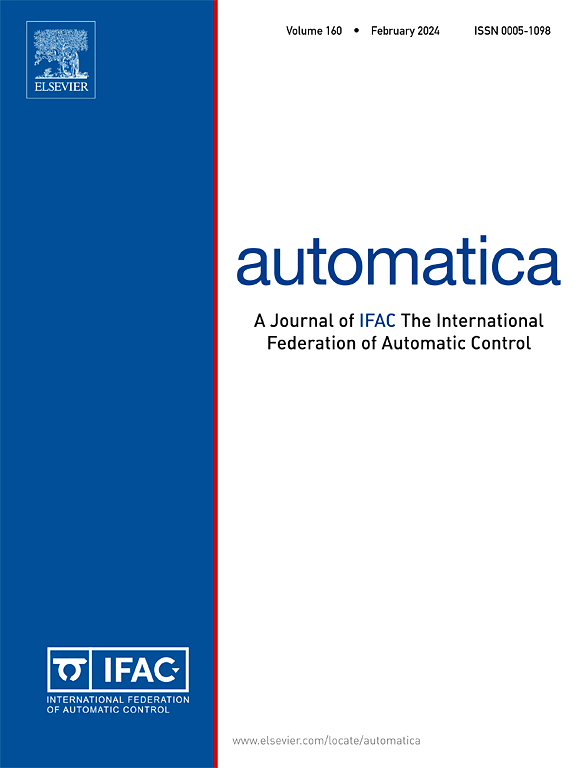On the reachability of 3-dimensional paths with a prescribed curvature bound
IF 4.8
2区 计算机科学
Q1 AUTOMATION & CONTROL SYSTEMS
引用次数: 0
Abstract
This paper presents the reachability analysis of curves in with a prescribed curvature bound. Based on Pontryagin Maximum Principle, we leverage the existing knowledge on the structure of solutions to minimum-time problems, or Markov–Dubins problem, to reachability considerations. Based on this development, two types of reachability are discussed. First, we prove that any boundary point of the reachability set, with the directional component taken into account as well as geometric coordinates, can be reached via curves of H, CSC, CCC, or their respective subsegments, where H denotes a helicoidal arc, C a circular arc with maximum curvature, and S a straight segment. Second, we show that the reachability set when directional component is not considered—the position reachability set—is simply a solid of revolution of its two-dimensional counterpart, the Dubins car. These findings extend the developments presented in literature on Dubins car into spatial curves in .
具有规定曲率界的三维路径的可达性
本文给出了具有规定曲率界的R3曲线的可达性分析。基于庞特里亚金极大值原理,我们利用现有的关于最小时间问题或马尔可夫-杜宾问题的解结构的知识来考虑可达性。基于这一发展,讨论了两种类型的可达性。首先,我们证明了在考虑方向分量和几何坐标的情况下,可达集的任何边界点都可以通过H、CSC、CCC曲线或它们各自的子段到达,其中H为螺旋弧,C为曲率最大的圆弧,S为直线段。其次,我们证明了不考虑方向分量时的可达性集——位置可达性集——是其二维对应物杜宾斯小车的旋转立体。这些发现将杜宾车文献中的发展扩展到R3中的空间曲线。
本文章由计算机程序翻译,如有差异,请以英文原文为准。
求助全文
约1分钟内获得全文
求助全文
来源期刊

Automatica
工程技术-工程:电子与电气
CiteScore
10.70
自引率
7.80%
发文量
617
审稿时长
5 months
期刊介绍:
Automatica is a leading archival publication in the field of systems and control. The field encompasses today a broad set of areas and topics, and is thriving not only within itself but also in terms of its impact on other fields, such as communications, computers, biology, energy and economics. Since its inception in 1963, Automatica has kept abreast with the evolution of the field over the years, and has emerged as a leading publication driving the trends in the field.
After being founded in 1963, Automatica became a journal of the International Federation of Automatic Control (IFAC) in 1969. It features a characteristic blend of theoretical and applied papers of archival, lasting value, reporting cutting edge research results by authors across the globe. It features articles in distinct categories, including regular, brief and survey papers, technical communiqués, correspondence items, as well as reviews on published books of interest to the readership. It occasionally publishes special issues on emerging new topics or established mature topics of interest to a broad audience.
Automatica solicits original high-quality contributions in all the categories listed above, and in all areas of systems and control interpreted in a broad sense and evolving constantly. They may be submitted directly to a subject editor or to the Editor-in-Chief if not sure about the subject area. Editorial procedures in place assure careful, fair, and prompt handling of all submitted articles. Accepted papers appear in the journal in the shortest time feasible given production time constraints.
 求助内容:
求助内容: 应助结果提醒方式:
应助结果提醒方式:


